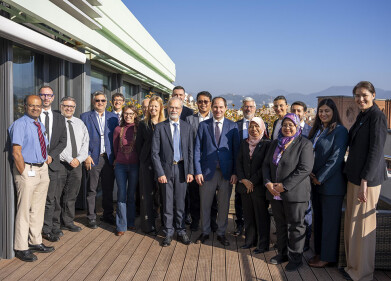Air clean up
Is Air Pollution to Blame for Westminster’s Decay?
Feb 06 2017
When it comes to ranking landmarks in London, Westminster is amongst most people’s top five. But unfortunately, it isn’t amongst the top five in terms of its condition. The Palace of Westminster has become notable for its crumbling exterior of late, and is reportedly in need of a £3.9 billion revamp.
But what has caused the damage? More and more now we are seeing headlines about London’s pollution problem, some of which are accompanies by pictures of thick smog looming over the capital. And what is that in the background? Westminster of course.
Crumbling stonework
It doesn’t take a genius to put two and two together on this one. The rising amount of toxic chemicals in the air is taking its toll on Westminster. More and more traffic in London is leading to higher levels of nitrogen dioxide, mainly from diesel engines.
As well as creating smog, nitrogen dioxide is a contributant to acid rain. And – as anybody who paid attention in secondary school science will know – acid rain has a terrible effect on stonework, eroding it noticeably over time.
Not the first time…
Although the decay has worsened considerably of late, this isn’t the first-time Westminster has been the victim of the effects of air pollution. When the palace was being built between 1840 and 1870, builders noticed the stones becoming decayed as they were being laid.
A recent discovery by Robert Angus Smith led them to the conclusion that it was acid rain causing the problem. He had noticed similar decay in Manchester, because of the huge clouds of smoke from the Industrial Revolution’s coal burning. It didn’t help that the palace was being built from cheap, easily carved but ultimately vulnerable limestone.
An ongoing problem
In the 19th and 20th centuries, the problem worsened. It wasn’t until large chunks began to fall that repair work was planned. This work was put on hold during the war, and wasn’t finished until the 60s. And twenty years on, the palace was being restored again for the same reasons.
Now, in 2017, we find ourselves with the same predicament. The question is – will we just restore the building, or are we going to try and solve the pollution problem? Over the past few years, the US have introduced new standards limiting discharges of mercury from power plants.
It has led to a big market for chemicals to capture mercury, and was necessary to reduce the environmental damage caused by the substance. London will need similar initiatives to deal with the nitrogen dioxide problem, or they face an ongoing battle with its effects.
Events
Jan 29 2025 Tokyo, Japan
Feb 05 2025 Nantes, France
Feb 16 2025 Kampala, Uganda
Feb 26 2025 Chennai, India
Feb 26 2025 Tulsa, OK, USA










